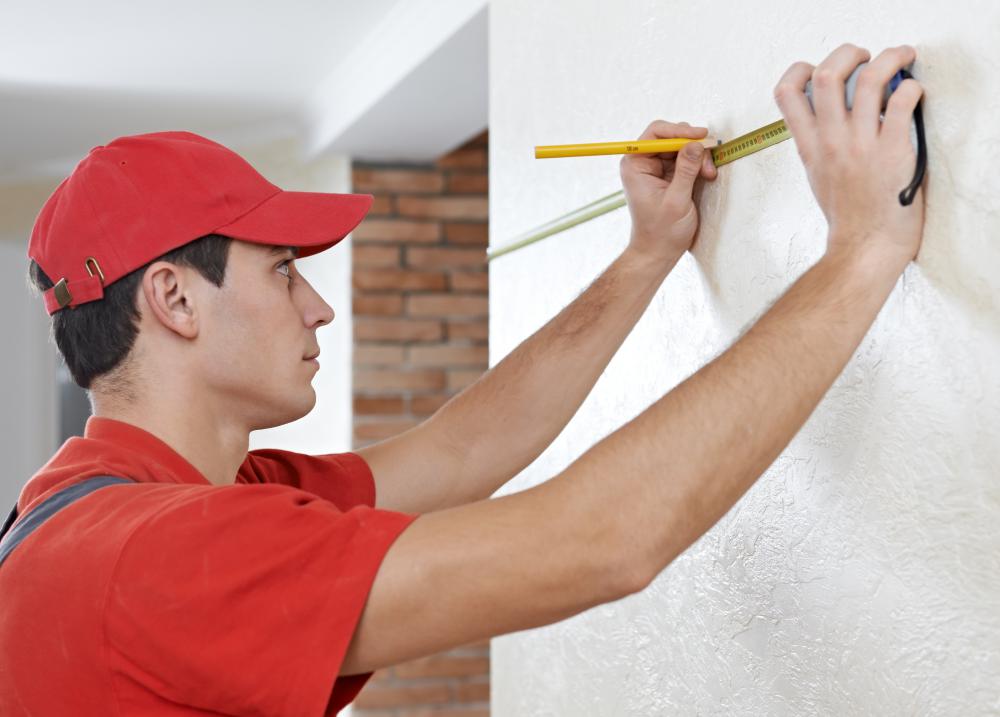At WiseGEEK, we're committed to delivering accurate, trustworthy information. Our expert-authored content is rigorously fact-checked and sourced from credible authorities. Discover how we uphold the highest standards in providing you with reliable knowledge.
How can I Put Shelves up in my House?
The process of installing shelves in your home is not difficult, but it does require some preparation. Here are some tips on how to put up shelves that will help you walk through the process from beginning to end.
In order to put shelves up in your house, the first thing you should do is assemble your tools and materials. You will need shelving, precut to the lengths that you desire. Brackets for the shelves, wall anchors, and screws will also be essentials. To make sure you can plan properly for the shelf installation, have a screwdriver, pencil, tape measure and a level handy. The job will also be much easier with a stud finder, electrical detector, and a drill with a bit that is a little smaller in diameter than the screws.

Your first step will be to decide where you want to hang the shelf. To a degree, this will be dictated by the position of the wall studs and any electrical wiring contained in the wall. It is imperative that the holes for the shelf brackets are well away from any wiring. Use the electrical locator to check the section of the wall for any wiring and plan accordingly. If you can use the stud finder and discover that a wall stud is right where you want to put one of the brackets, that is all the better. If not, then you can simply plan on using the wall anchors for the installation of all the brackets.

Using the pencil lightly mark the location for the shelf. A mark at the location where you want to place each supporting bracket will do just fine. Also, take a moment and make sure your marks are all at the same height. Use the level to check for any discrepancies. Adjust as needed so that when you put shelves up on the brackets, the shelf will be level. Note that if you make your marks so they are floating where the underside of the shelf will be, you will not have to allow for the thickness of the shelf in adjusting the location for the brackets.

As your next task in the process to put shelves up, drill a small hole at each of your bracket marks. While some people say it is not necessary, it will make inserting the anchors into the wall much easier. Gently tap each anchor until it is flush with the wall. Once the anchors are in place, secure the brackets in place with the screws. For floating wood brackets, leave about an eighth of an inch between the head of the screw and the anchor. Slide the bracket over the head of the screw and push down gently but firmly. The fit against the wall should be snug, with the bracket firmly in place. Once your brackets are all in place, you are ready to put shelves up on the brackets.

After you put shelves up on each set of brackets, use the level again to check for any last minute discrepancies. Often, it may simply be a matter of pushing down slightly on a bracket to make the shelf perfectly level. Once you are satisfied that the shelves are level, make sure the shelf it centered squarely on the brackets. Step back and make sure the symmetry is what you planned for the shelving. At this juncture, you have put shelves up in your home and are ready to dress them with books, plants and other objects.
AS FEATURED ON:
AS FEATURED ON:














Discussion Comments
That makes sense Rundocuri. It also helps to follow the instructions closely when putting up home shelving.
While wall anchors do work well for putting shelves up that are not meant to hold heavy items, it is best to place heavy duty shelves on wall studs. I found this out the hard way when a shelf fell in my home. I had too many heavy items on it, and the wall anchors didn't hold up over time.
Post your comments